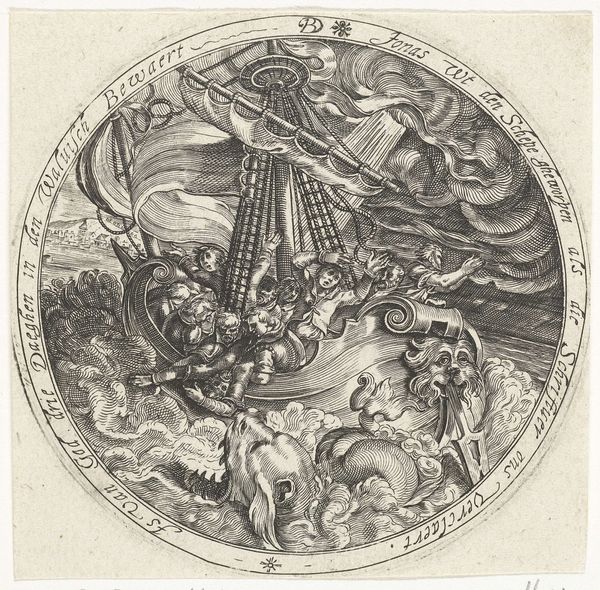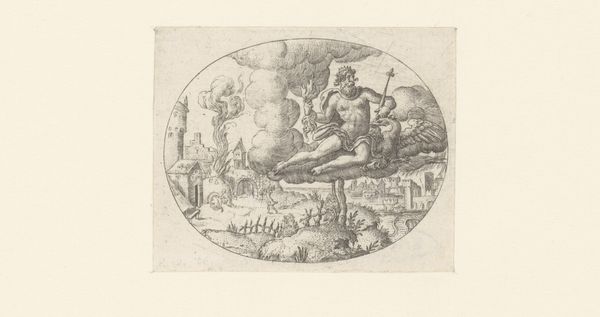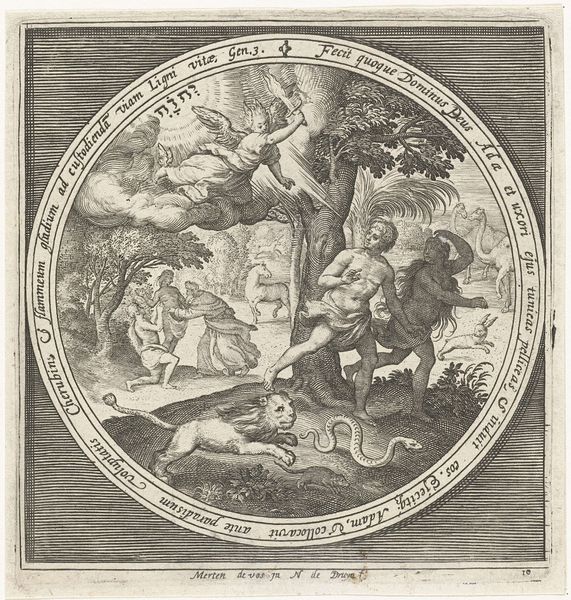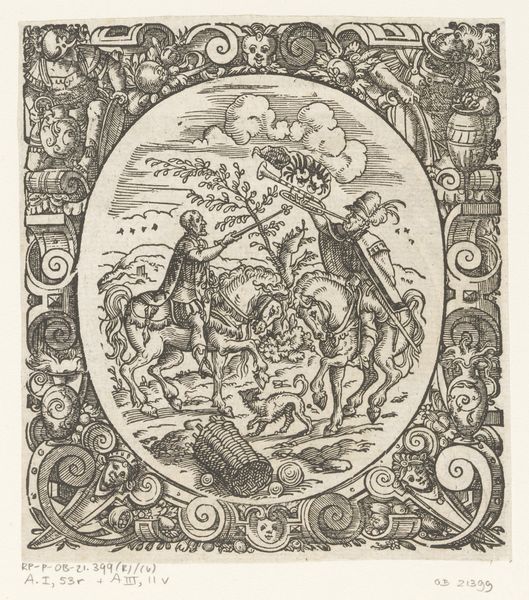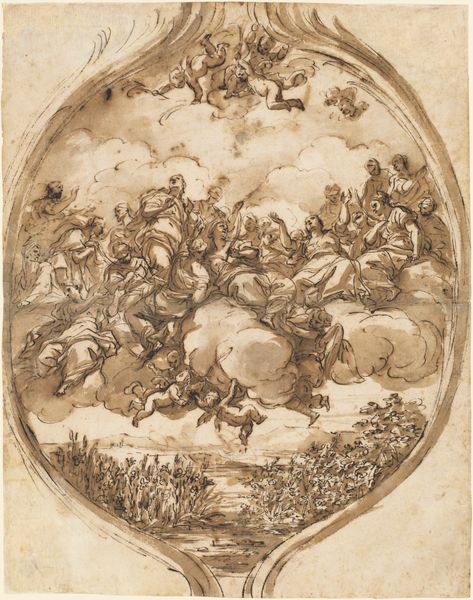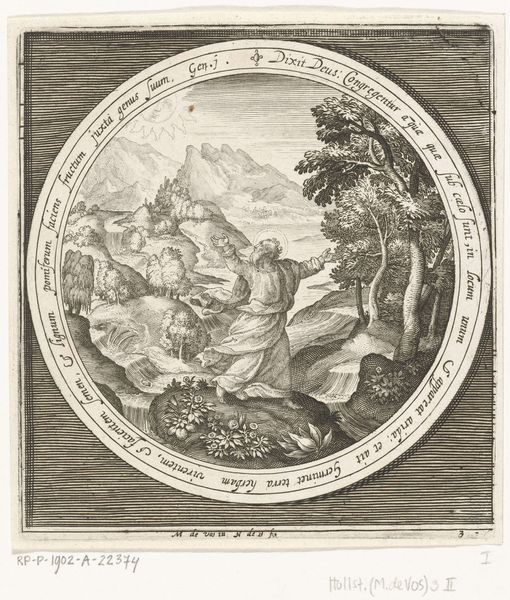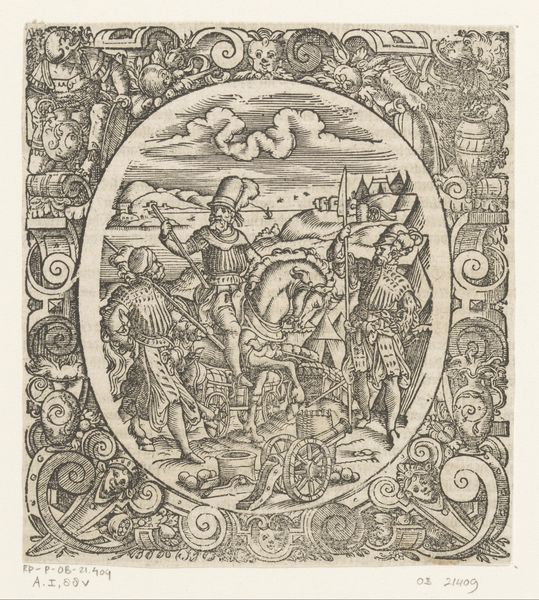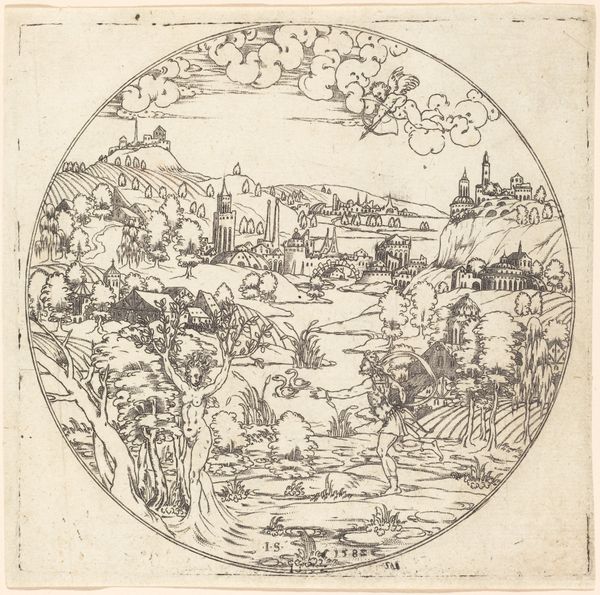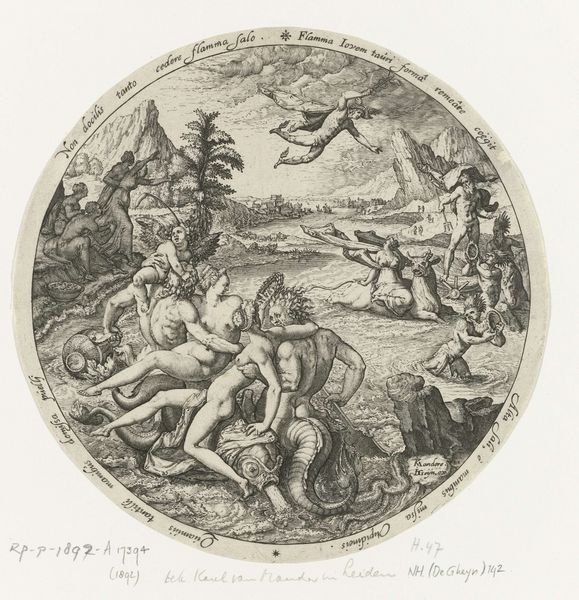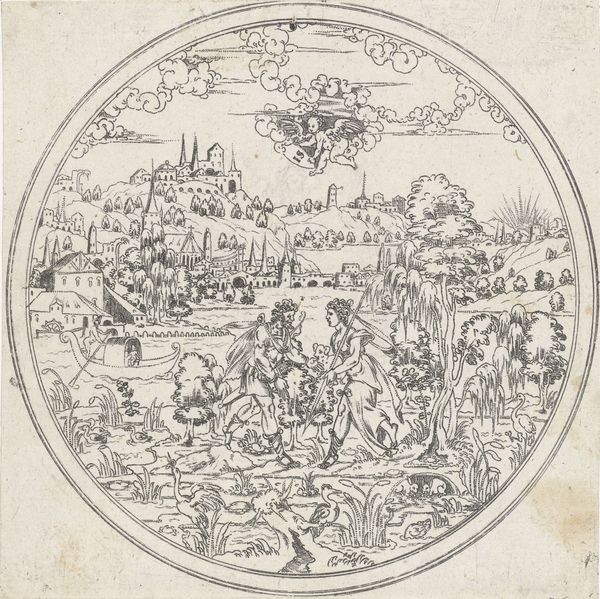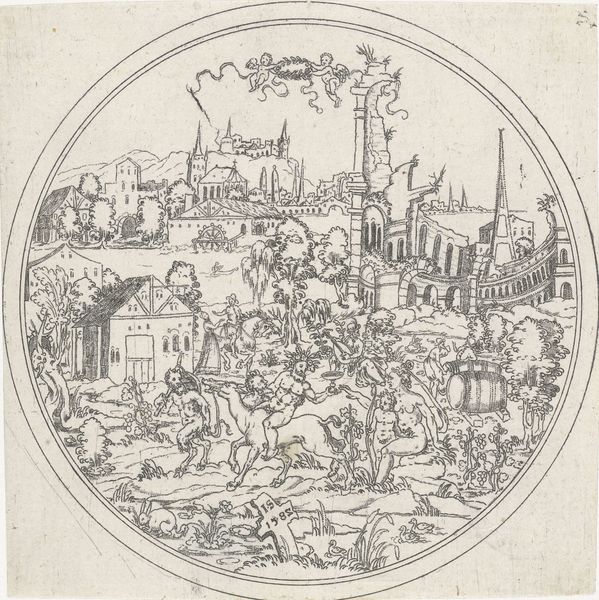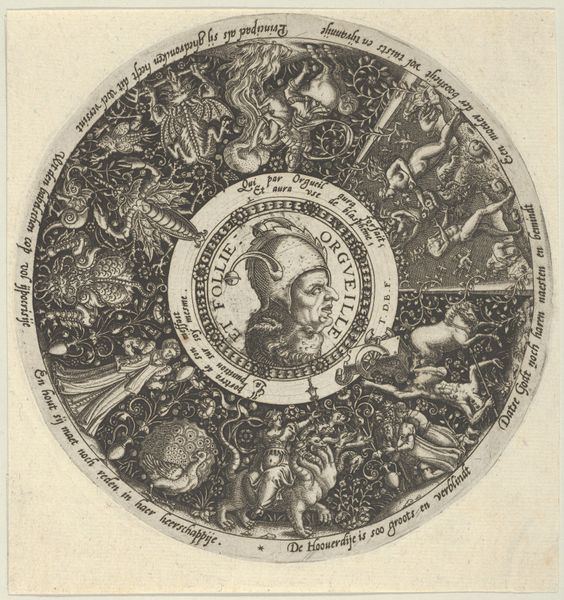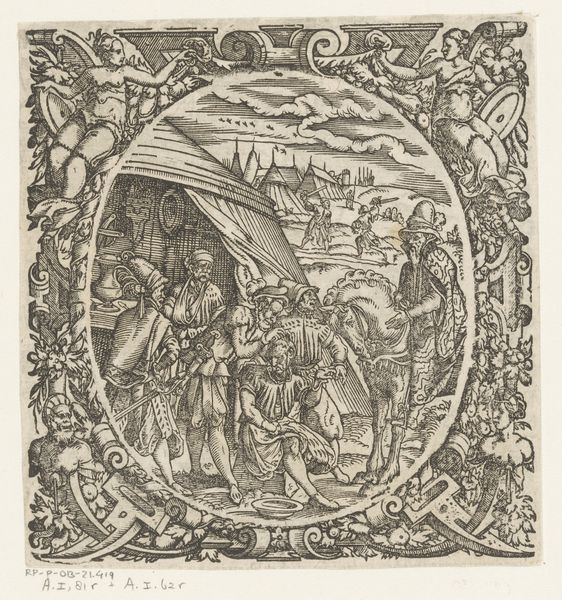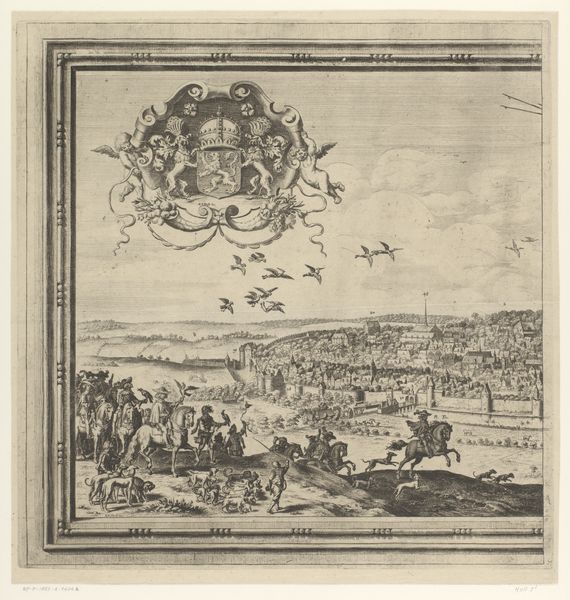
drawing, print, ink, pen, engraving
#
drawing
#
pen drawing
#
mechanical pen drawing
# print
#
pen illustration
#
pen sketch
#
old engraving style
#
landscape
#
ink line art
#
personal sketchbook
#
ink
#
pen-ink sketch
#
pen work
#
sketchbook drawing
#
pen
#
genre-painting
#
engraving
Copyright: Rijks Museum: Open Domain
Curator: This engraving, "Jonah under the Wonder Tree" by Bartholomeus Willemsz. Dolendo, made between 1589 and 1626, presents a rather intriguing scene, doesn't it? The composition, a circular print with incredibly fine lines, gives it a sort of miniature, almost precious feel. I wonder, what catches your eye most about this piece? Editor: I’m struck by the level of detail achieved through printmaking, especially considering the timeframe. The landscape feels very elaborate, even though it’s a fairly small image. How do you see the relationship between the craft of engraving and the religious narrative being depicted? Curator: Ah, an excellent question! For me, the key lies in the *process*. Look closely. The labour involved in meticulously etching each line speaks to a particular kind of devotion. The engraver's hand becomes a tool for disseminating not only religious narratives, but also, in this case, certain ideas about landscape. Don’t you find that the very act of replicating the world – even religiously – alters how we perceive both that labour, and that representation? It also implies that the engraving can circulate, reaching audiences perhaps excluded by the art market. The material reality shapes the message. Editor: I see what you mean. It’s not just *what* is being shown but *how* it was made and distributed that gives it meaning. Was printmaking considered a ‘high art’ then, or more of a commercial craft? Curator: That's the rub, isn’t it? Such distinctions are imposed later. Here, the repetitive, almost mechanical act of engraving allows for mass production and broad dissemination of biblical themes. The lines blur between sacred art and commodity. The engraving facilitates both devotional practice and widespread access. Do you notice how the pen mimics line art? Editor: That's so interesting! It completely changes how I view this piece. Instead of focusing solely on the biblical scene, thinking about the materials and production process highlights how the meaning itself is tied to how people access the image. Curator: Exactly! This shift highlights how materials and the means of production actively shape and determine value, religious or otherwise.
Comments
No comments
Be the first to comment and join the conversation on the ultimate creative platform.
